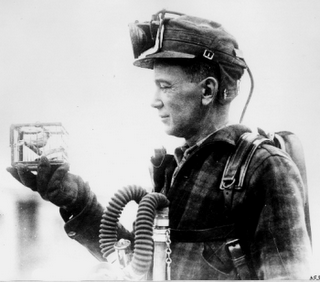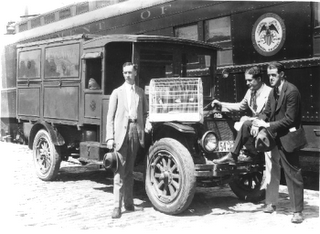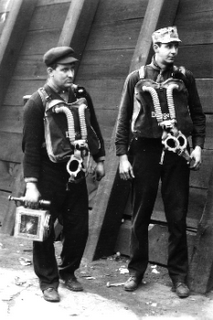Uso dos canários num trabalho perigoso no seculo XX.

U.S. Department of LaborMine Safety and Health Administration Protecting Miners' Safety and Health Since 1978
Carbon monoxide, a potentially deadly gas devoid of color, taste or smell, can form underground during a mine fire or after a mine explosion. Today's coal miners must rely on carbon monoxide detectors and monitors to recognize its presence underground. However, before the availability of modern detection devices, miners turned to Mother Nature for assistance. Canaries -- and sometimes mice -- were used to alert miners to the presence of the poisonous gas. Following a mine fire or explosion, mine rescuers would descend into the mine carrying a canary in a small wooden or metal cage. Any sign of distress from the canary was a clear signal that the conditions underground were unsafe, prompting a hasty return to the surface. Miners who survive the initial effects of a mine fire or explosion may experience carbon monoxide asphyxia.

Small cage with canary bird used in testing for carbon monoxide gas.Hollinger Mine, Timmons, Ontario, Canada.
Mine Fire 02/10/1928According to tests conducted by the Bureau of Mines, canaries were preferred over mice to alert coal miners to the presence of carbon monoxide underground, because canaries more visibly demonstrated signs of distress in the presence of small quantities of the noxious gas. For instance, when consumed by the effects of carbon monoxide, a canary would sway noticeably on his perch before falling, a much better indicator of danger than the limited struggle and squatting, extended posture a mouse might assume...

Canary in large cage - type of cage used to transport birds in rescue vehicles. (1915)

Mine Rescue Corps returning from scene of explosion with canary in "resuscitation" cage. Date and location unknown.

